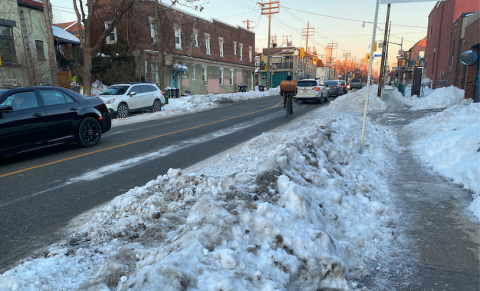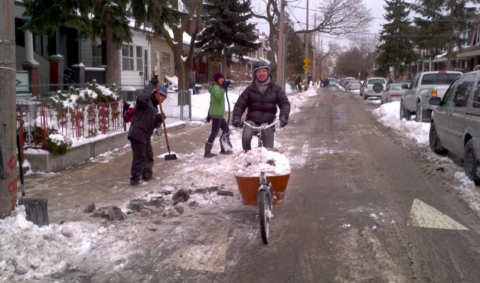
Winter cycling shouldn’t be this hard
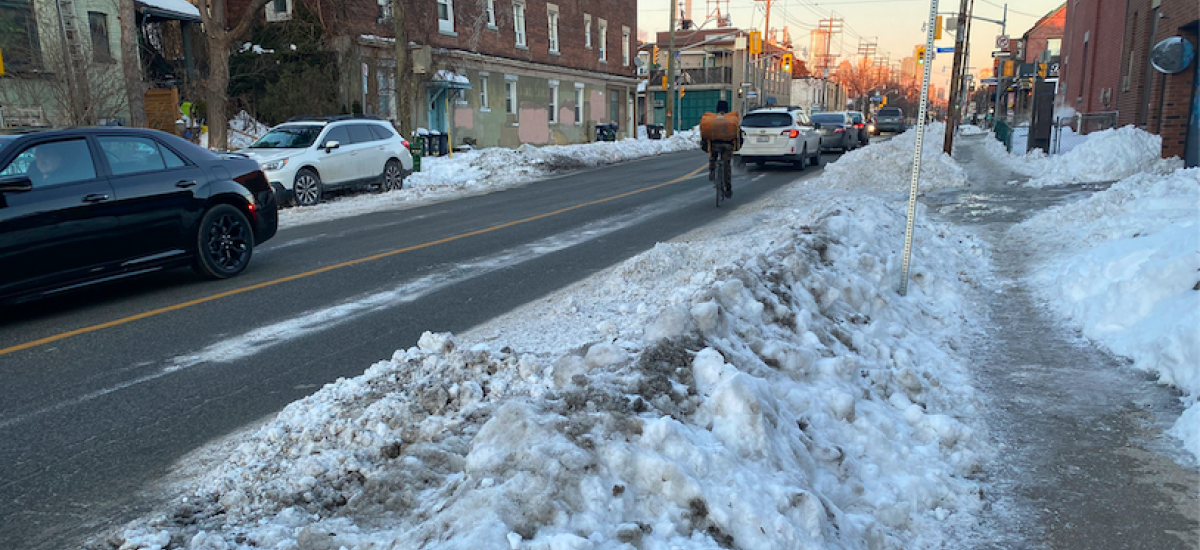
Skip to our Action Alert below and write to your local councillor and the Mayor about why we need reliable snow clearance and removal.
Looking back on my eighth year as someone who bikes through Toronto’s winters, a lot has changed. I remember getting out my shovel for Cycle Toronto’s “Shovel-In on Shaw St” in 2016 to demonstrate the absurdity of treating our bike lanes like a dumping ground for snow. I remember that feeling of joy after seeing the Bloor bike lane pilot filled with people over its first cold and dry winter days. I remember my first Coldest Day of the Year Ride seeing hundreds of people with their families and friends out to celebrate the joys of riding all through the year. I remember our organization making winter cycling snow routes a reality by pushing for a budget to the tune of $650,000 per year for snow clearance. We have the budget, we have the cyclists, and we have the know-how. So it has to be asked: one week after a snowstorm…why is there so much snow in the bike lane?
2016 Shovel-In on Shaw St picture

My ability to get by without owning a car is dependent on holding onto my rent controlled apartment while I still can, in order to live somewhere I can walk and bike safely with my family. And as many of us endure the second full winter of the pandemic, I am among those fortunate enough to be able to work from home and can walk or bike to most of my destinations easily…or I would be that is, except for the road conditions.
The City has committed to removing snow within 6-16 hours for cycle tracks and bike lanes and no more than 48-72 hours for full snow removal to achieve bare pavement. And as we can predict for our winters, at least once in a while, there is going to be a lot of snow. But after a major snowfall, we watched the week unfold, figuring out how we would get to the places we needed to go.
Here’s what I saw each day on Harbord & Shaw St, along two of the most heavily travelled bike routes in the city:
Monday: extreme snow dump. Schools were closed. Driving, biking, and walking conditions were understandably unsafe. Most of us expected snow clearance would take at least 24 hours.
Tuesday: another snow day for schools. Driving conditions had improved significantly. Biking and walking conditions were still brutal. I use my bike to help with mobility since I injured my back, but I had no choice but to carry my daughter to and from daycare through knee-high snow. For our senior residents, those who rely on mobility devices, or people getting to the bus stop, our city had absolutely failed them.
Wednesday: snow isn’t cleared and turns to ice. Even the bravest of us would not dare to bike in the “bike lanes to nowhere”, cleared in some places and full of snow, ice, and sometimes, just covered completely in others:
#1 Shaw contraflow south of harbord st.png
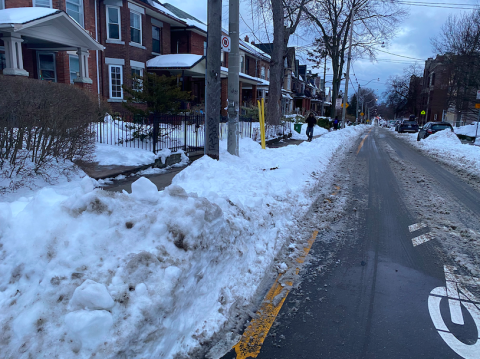
#2 harbord st bike lane at clinton st_west.png
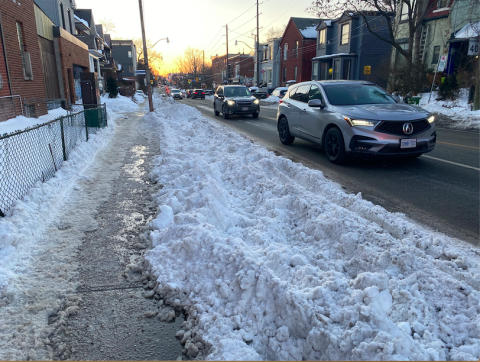
harbord st bike lane in snow clint st_east.png
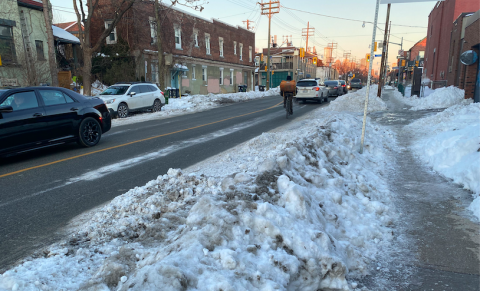
harbord bike lane #4.png
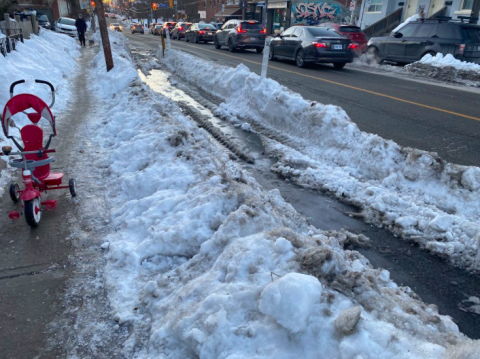
It’s Monday again, and despite our collective @311 #PlowTO #bikeTO pleas on Twitter and over email, we are no further ahead.
#5 harbord st one week after snow fall.png

#6 shaw st contraflow one week after snow fall.png
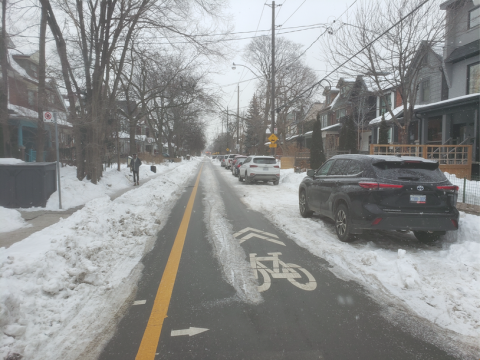
Toronto is a big city. I consider myself lucky to live in one of its most walkable and bikeable neighbourhoods. I can’t even imagine what traversing on streets like Kingston Rd, Eglinton Ave, or Yonge St north must be like through the winter, especially with loved ones in tow. The lack of safe year-round cycling routes is why the rhetoric we hear of “no one bikes in the winter” persists.
So many of us want to ride and rely on our bikes for transportation, and come rain or come snow, we will bike year-round. We’ve fought for and in principle achieved a degree of acceptance that Toronto can be a winter cycling city. We can handle the cold temperatures. We’ve gathered in droves for the Coldest Day of the Year Ride. What we cannot do is bike on unsafe roads. Do we really need to get the shovels out ourselves again? Here I am writing the same blog post I wrote 3 years ago: you wouldn’t drive on a road that wasn’t cleared. We need predictable and consistent snow clearing and maintenance on all of our roadway. When people drive, they expect nothing less. Winter cycling shouldn’t be this hard…and it doesn’t have to be.
coldest day ride 2019.png
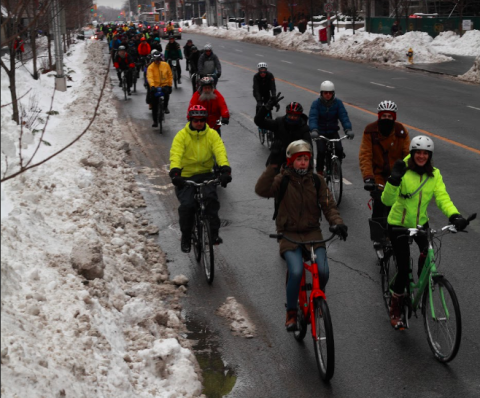
Keagan Gartz
Executive Director
Cycle Toronto
ACTION ALERT
Send an email to the Mayor and your local Councillor (find your Councillor here). There's a sample email below.
|
TO: |
||
|
CC: |
info@cycleTO.ca |
|
|
SUBJECT: |
Clear snow from bike lanes: a week later, I still don’t have safe routes to ride this winter |
|
|
BODY: |
Dear Mayor Tory, Toronto is a winter city where people rely on walking and biking year-round for transportation. I am frustrated that a week after the snowstorm, Toronto’s cycling network is still a snow-filled, icy mess, entirely unusable by people like myself who need safe year-round cycling routes. I understand that we had a historic snowfall last week, but within a couple of days, many roads were completely bare for drivers. Meanwhile, people cycling have had to maneuver around bike lanes completely as they are unusable. The City has committed to removing snow within 6-16 hours for cycle tracks and bike lanes and no more than 48-72 hours for full snow removal to achieve bare pavement. One week later and with more snow already falling, we are still waiting. We still need to get our groceries, take our kids to school, and get to work. Just as we saw drivers struggle to move around on Monday and Tuesday when driving lanes were full of snow, people walking and cycling cannot get around without maintaining safe routes for them. I need you to ensure that snow clearing and removal for sidewalks and bike lanes is prioritized. If you agree that bike lanes are necessary to keep people safe and that we need to give people realistic alternatives to driving, then bike lanes have to be reliably cleared. Winter cycling shouldn’t be this hard.
|

